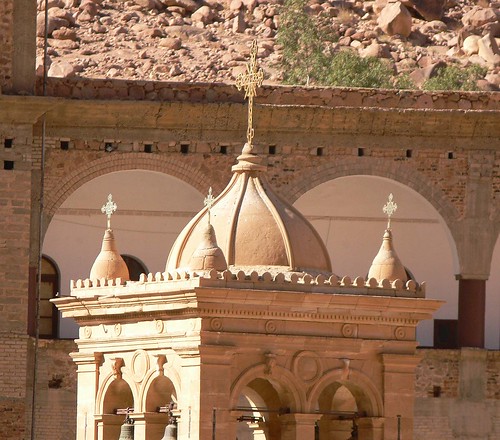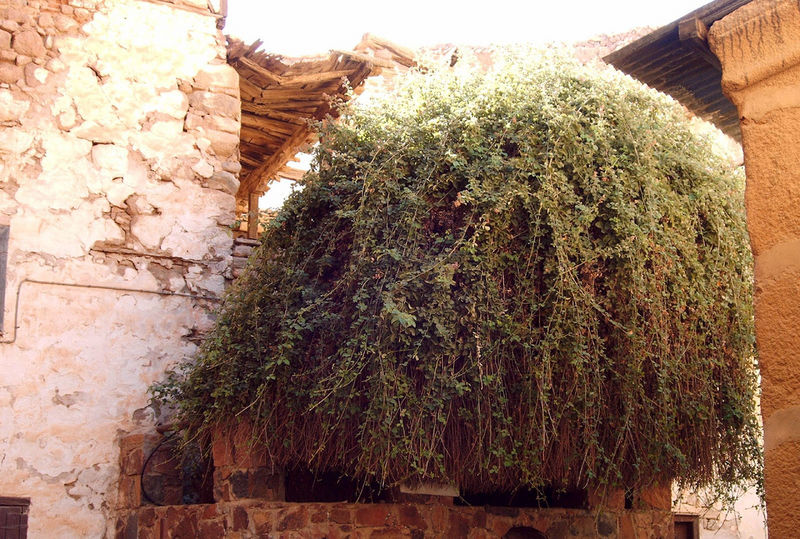
 Saint Catherine was a Christian martyr initially sentenced to death on the wheel. However, when this failed to kill her, she was beheaded. According to tradition, angels took her remains to Mount Sinai. Around the year 800, monks from the Sinai Monastery found her remains. At this time Egypt was a Muslim country so this Christian monastery in the enormous mountain passes of Sinai could use an Egyptian saint from the Early Church.
Saint Catherine was a Christian martyr initially sentenced to death on the wheel. However, when this failed to kill her, she was beheaded. According to tradition, angels took her remains to Mount Sinai. Around the year 800, monks from the Sinai Monastery found her remains. At this time Egypt was a Muslim country so this Christian monastery in the enormous mountain passes of Sinai could use an Egyptian saint from the Early Church.St. Catherine's Monastery possesses some of the earliest icons in existence, including this 6th-century hot wax icon.
The monastery was built by order of Emperor Justinian I between 527 and 565, enclosing the Chapel of the Burning Bush ordered built by Helena, the mother of Constantine I, at the site where Moses is supposed to have seen the burning bush; the living bush on the grounds is purportedly the original. The site is sacred to three major world religions - Judaism, Christianity, and Islam.

Though it is commonly known as Saint Catherine's, the actual name of the monastery is the Monastery of the Transfiguration. The site was associated with St. Catherine of Alexandria (whose relics were purported to have been miraculously transported there by angels) and it became a favorite site for pilgrimages.
The monastery library preserves the second largest collection of early codices and manuscripts in the world, outnumbered only by the Vatican Library. Its strength lies in Greek, Coptic, Arabic, Armenian, Hebrew, and Syriac texts.
The complex houses irreplaceable works of art: mosaics, Greek and Russian icons, encaustic paintings, as well as sacerdotal ornaments, chalices and reliquaries. Most importantly, it is home to some of the earliest icons in the world, dating to the 5th and 6th centuries. The oldest icon on the Old Testament theme is also preserved there. A project to catalogue the works held in the library is currently being undertaken.

1 comment:
This is very cool. I recently checked out a video from the library called something like, "Walking the Bible." It showed Mt. Ararat and other biblical sites, and it showed this monastery. Spent quite a bit of time on it too. Never had heard of it before. Quite a library there and so remote.
Post a Comment